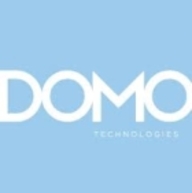

SAP BusinessObjects and Domo both compete in the business intelligence sector. Domo stands out with its ease of use and data connectivity options, which may give it an edge for businesses prioritizing user-driven analytics and flexibility.
Features: SAP BusinessObjects Business Intelligence Platform offers robust solutions like Crystal Reports, Web Intelligence, and Universe Designer, designed for comprehensive report generation and data merging. Domo supports a wide range of data sources through its data connectors and allows straightforward data transformation using tools like Magic ETL.
Room for Improvement: SAP BusinessObjects needs enhancements in performance, integration across tools, and user interface improvements. Domo could further develop its Magic ETL to handle larger datasets more efficiently and expand its visualization options.
Ease of Deployment and Customer Service: SAP BusinessObjects is often deployed on-premises, facing setup complexity and variable technical support. Domo supports hybrid cloud deployment with a reputation for good customer service, though response times can occasionally be slow.
Pricing and ROI: SAP BusinessObjects is costly and might restrict ROI for smaller organizations due to its licensing model. Domo, while expensive, offers flexible pricing models that accommodate different organization sizes, potentially providing better value through its comprehensive BI capabilities.
If you're actually using Domo at a very limited case and you're being charged $20,000, we've seen ROI there, but once it goes really high, you really need to check your metrics and check your profit.
The initial investment will be more, but the ROI is also good, so they can consider it if they're looking for something in the long run.
For most of my clients using the on-premises version of SAP BusinessObjects Business Intelligence Platform, the return on investment is positive due to its affordability and ability to handle diverse reporting needs while automating information distribution.
I have seen a return on investment so far in the form of saved time and resources.
No matter how complex the problem is, it can be taken care of by the support team.
They were quite professional and in around three to five working days, they had identified where they suspected there was an issue and I was able to fix it.
It's very easy to get technical support from Domo.
I would rate their technical support as excellent.
I have experience with SAP technical support and have supported customers, including those in financial services.
Sometimes, they forward my ticket to the technical team, especially when my issue involves technical aspects that basis people may not be familiar with.
The fact that you're able to easily identify the pipelines or flows that have errors, and it notifies you when you're building a pipeline where you can run previews and tell where to fix issues, is helpful.
When fetching files larger than 100 MB from SFTP or any other portal, Domo becomes slow due to the heavy file size.
Everything comes under the same umbrella and it's pretty user-friendly.
I rate the scalability of SAP BusinessObjects Business Intelligence Platform as a nine due to performance issues related to optimizing parts.
In recent years, I haven't had such cases. It's quite stable and I don't have any reservations on its stability.
In terms of overall stability of the platform, it's very stable.
During that time, we faced issues from the project side as Domo was not visible in our portal.
When they tried upgrading from 4.2 to 4.3, they found it buggy in some reports, which was quite problematic.
End users require a license to run their own reports and dashboards, which are fairly expensive.
Some technical aspects such as Beast Mode calculation could be improved in Domo, as it would provide more clarity and help in giving insights to clients or customer business team requirements.
One of the areas where we've had frustrations with Domo is the aesthetics. The aesthetics are quite limited compared to other BI tools such as Tableau and Power BI.
I've worked with other tools, for example, Microsoft Power BI, which is visualization-wise very strong.
SAP BusinessObjects is expected to be phased out by 2027 as reports are moving to SAP Analytics Cloud.
I would appreciate integration with Outlook as an additional feature in the future to make it closer to a perfect score.
Domo's pricing is high compared to other BI tools, and it is costly.
For long-time users, it can become expensive, but the trade-off is access to the entire platform instead of licensing different components separately.
They quoted approximately one dollar per KB.
SAP BTP is an expensive solution.
The price is very competitive and reliable.
I rate the pricing for SAP BusinessObjects Business Intelligence Platform as a seven or eight.
App Studio is valuable because it allows all the customization we needed; we can decode it, with the view and grid which are all I need, drill-downs, and everything can be done the way I need it.
None of the other tools provide the kind of support that enables chatting and working on the same item simultaneously.
I have been using it for four years and have been able to extract the information I need from it.
For calculations, SAP BusinessObjects Business Intelligence Platform outperforms all other tools such as Power BI and Tableau, showing more accuracy, reliability, and flexibility compared to all other BI tools worldwide.
The best feature about it for me, and for them, is the fact that you have a universe that is well made.
The important features include a dashboard and reporting capabilities through SAP Analytics Cloud, which I consider to be a better version than the initial BusinessObjects platform.
| Product | Market Share (%) |
|---|---|
| SAP BusinessObjects Business Intelligence Platform | 2.9% |
| Domo | 3.9% |
| Other | 93.2% |


| Company Size | Count |
|---|---|
| Small Business | 16 |
| Midsize Enterprise | 12 |
| Large Enterprise | 20 |
| Company Size | Count |
|---|---|
| Small Business | 32 |
| Midsize Enterprise | 19 |
| Large Enterprise | 65 |
Domo is a cloud-based, mobile-first BI platform that helps companies drive more value from their data by helping organizations better integrate, interpret and use data to drive timely decision making and action across the business. The Domo platform enhances existing data warehouse and BI tools and allows users to build custom apps, automate data pipelines, and make data science accessible for anyone through automated insights that can be shared with internal or external stakeholders.
Find more information on The Business Cloud Here.
SAP BusinessObjects Business Intelligence Platform is a versatile and flexible solution for reporting and dashboards, focusing on analytics and ad hoc reporting. It can be deployed on-premise or in the cloud. The solution includes tools such as Web Intelligence, Crystal Reports, SAP Lumira, and Analytical Cloud and is primarily used for comprehensive business intelligence reporting.
The most valuable features include excellent reporting features, good technical support, scalability, and the ability to translate database data into business language. The solution has helped organizations by providing analytics, monitoring KPIs, and making important decisions as a financial business.
SAP BusinessObjects Business Intelligence Key Features
Reviews from Real Users
SAP BusinessObjects BI stands out among its competitors for a number of reasons. Several major ones are its user-friendly dashboard, its impressive reporting and analytic features, and its ability to integrate with multiple solutions.
A managing partner at a tech services company writes, "One of the most valuable features of SAP BusinessObjects is that it's not a dashboarding solution. It's a real product. You can create operational reports and publish it to anyone. You can create schedules. You can create a Universe, semantic layers. There's also a security configuration. It's a huge product, so if there is a business need, SAP BusinessObjects can cover it."
An associate manager at a consultancy notes, "It provides flexibility for creating reports. It is very good for creating highly complex reports. I like this solution because when I buy BusinessObjects, it comes with many components, such as reporting, dashboard, and data visualization tools. Its performance is good. It is running on top of SAP BW and SAP HANA."
A manager of data analytics and interfaces at a healthcare company says, "It has got great flexibility. As a reporting tool, it has a great deal of flexibility for numerous data resources that you can bring into it. It allows you to write your SQL query directly within the product. It has great visualization.
We monitor all BI (Business Intelligence) Tools reviews to prevent fraudulent reviews and keep review quality high. We do not post reviews by company employees or direct competitors. We validate each review for authenticity via cross-reference with LinkedIn, and personal follow-up with the reviewer when necessary.